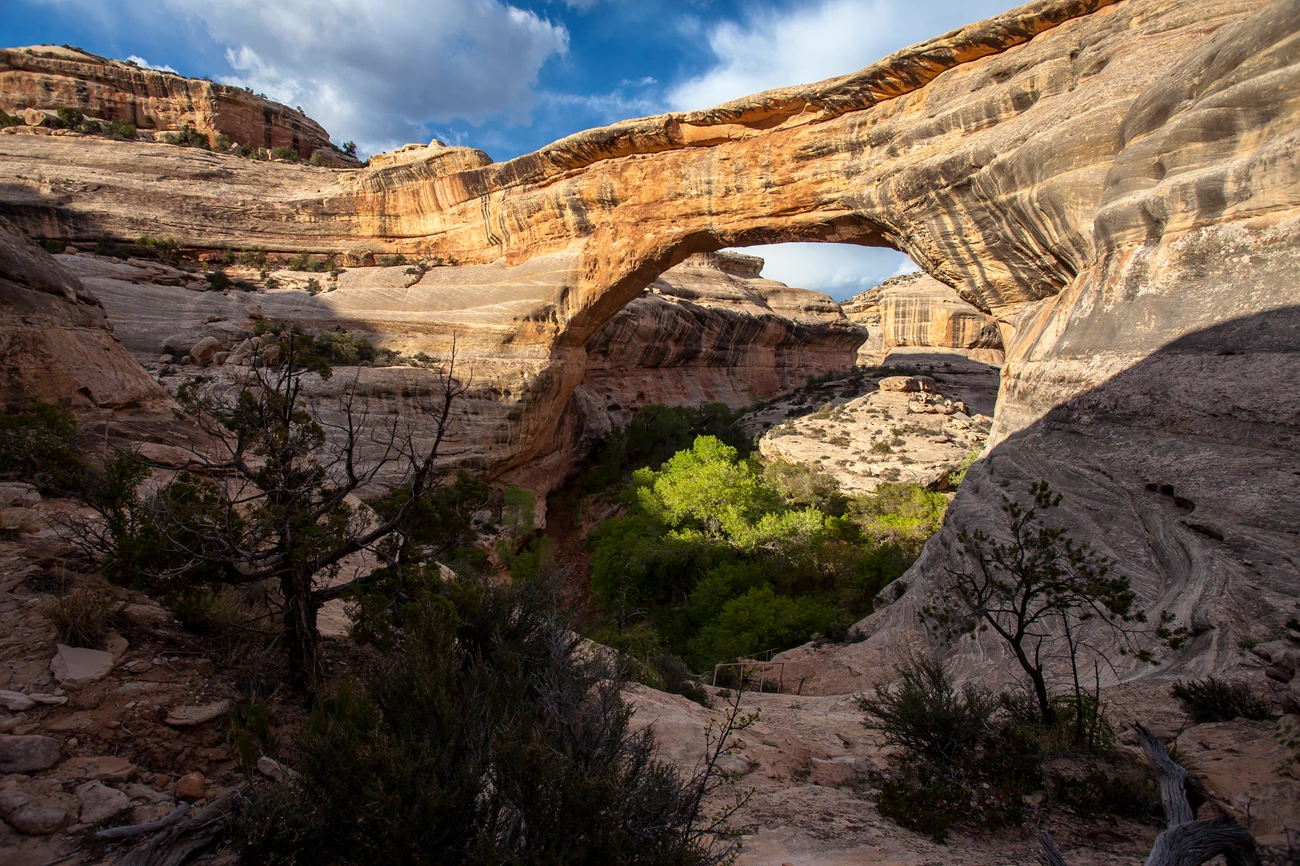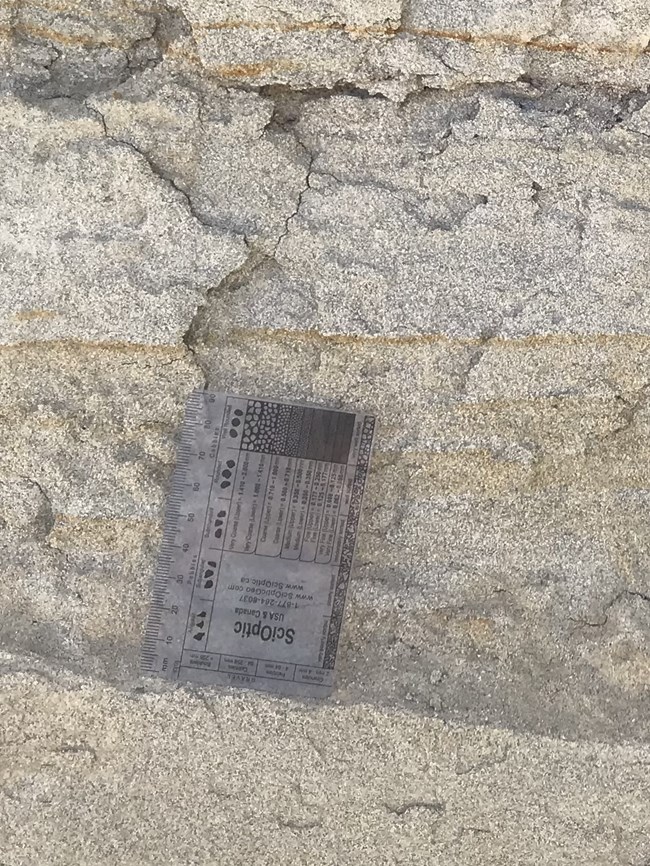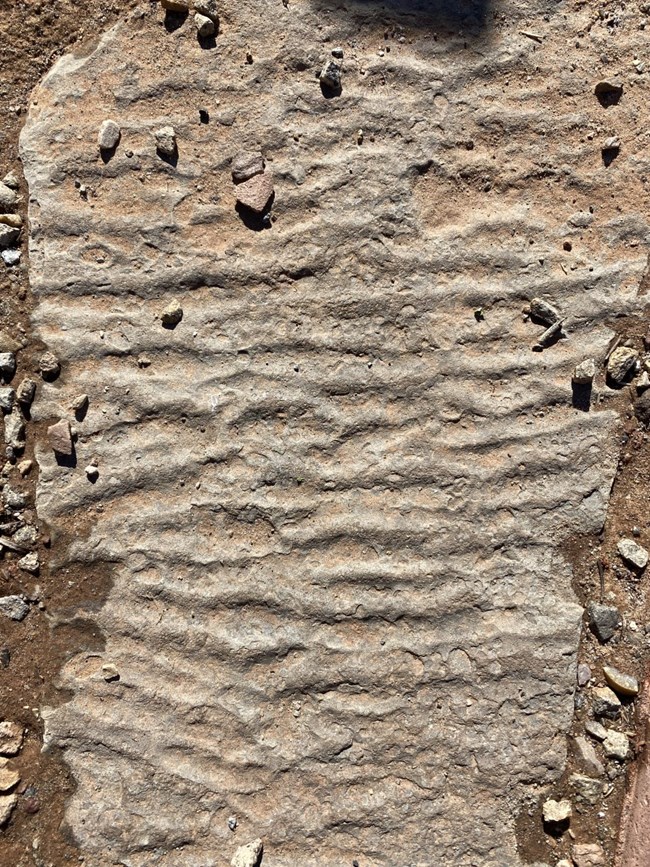Last updated: April 29, 2025
Article
But How Do They Know? Sedimentary Geology of Natural Bridges

NPS photo
Have you ever wondered how a geologist can look at a plain old rock and tell you where it came from, or how it was formed? Well, wonder no more! Let’s dive into the field of sedimentary geology.
Geology is the study of Earth, including the events that shaped Earth in the past and in present day. Sedimentary geology focuses on sedimentary rock, like the sandstone layers seen in Natural Bridges. These geologists study the events that took place during rock formation as well as changes after. These studies may focus on different scales, from a single rock to an entire landscape.

NPS photo
Small-Scale
Geologists working on a small scale, like individual rocks or rock layers, will study the rock’s grains, or pieces of sediment. Their notes may include:
-
Size (how big)
-
Sorting (how many different sizes are present)
-
Roundness (how close the grains are to a sphere)
-
and Composition (what materials in each grain)
These categories are vital tools in figuring out where, when, and how to rock formed. Geologists will also look at structures of features of the rock itself. For example, the cross beds we see in the Cedar Mesa Sandstone at Natural Bridges National Monument used to be large sand dunes. The sand dunes were formed by wind and water, telling geologists that the sand here was once part of a beach.

NPS photo
Try It Out – Small Scale
Here’s an example from Natural Bridges National Monument. How would you describe this rock? Let’s walk through it like a geologist!
The first thing that may have caught your eye were those wavy marks on top of the stone. Do they remind you of the ripple marks on sand, left behind by the waves? Good eye! Those are petrified ripples, so we can say that those were created in a shallow water area, like the edge of a lake or ocean.
Now let’s look closer at the stone’s grains. These grains are mostly the same shape and size. Using our geology vocabulary from earlier, that means they are uniform size, well sorted, and well rounded. Most likely, these grains traveled a long way from were the sediment formed to where the rock formed. This distance and time allowed wind, water, or both to slowly wear down the grains.
Using all of those observations, we can say that this stone formed in shallow water and with sand that traveled a long distance. The stone must have also formed quickly enough that the ripple shape remained.
Large Scale
On a larger scale, geologists look at the events and landscape changes that happened after rock layers formed. Features like bridges, arches, hoodoos, and spires all give clues to the story of a landscape. The scope may also include several different sedimentary rock layers. But no matter the size or scale, all sedimentary geologists are trying to do one thing; determine and share the story of the rocks under our feet.

NPS photo
Try It Out: Large Scale
Here’s an example from Natural Bridges National Monument. Let’s look at bridges themselves, tucked into White and Armstrong canyons. What do you think came first: the bridge, the rock, or the canyon? How do we know?
If you guessed that the rock layer formed first, you’re correct! But how do we know that? Let’s work backwards.
Natural bridges form within canyons, so they must be younger than the canyon. Natural bridges also need a large amount of water in a short period of time to punch through the rock and form a bridge. Glaciers melting produces that amount of water. Using the known history of glaciers in North America, we can determine that our bridges likely formed during the last glacial melting about 26,000 years ago. Thanks to glaciologists (geologists who study glaciers) for that knowledge.
Our natural bridges formed within two canyons: Armstrong Canyon and White Canyon. Canyons are formed when a large amount of water, usually in the form a river, flows through the area and cuts down into the rock. The rock layers must already be present for the canyon to form. Our two canyons were cut from Cedar Mess Sandstone, which geologists dated to forming between 300 and 279 million years ago. So, we know the canyons formed after that, but before 26,000 years ago, when the bridges formed.
